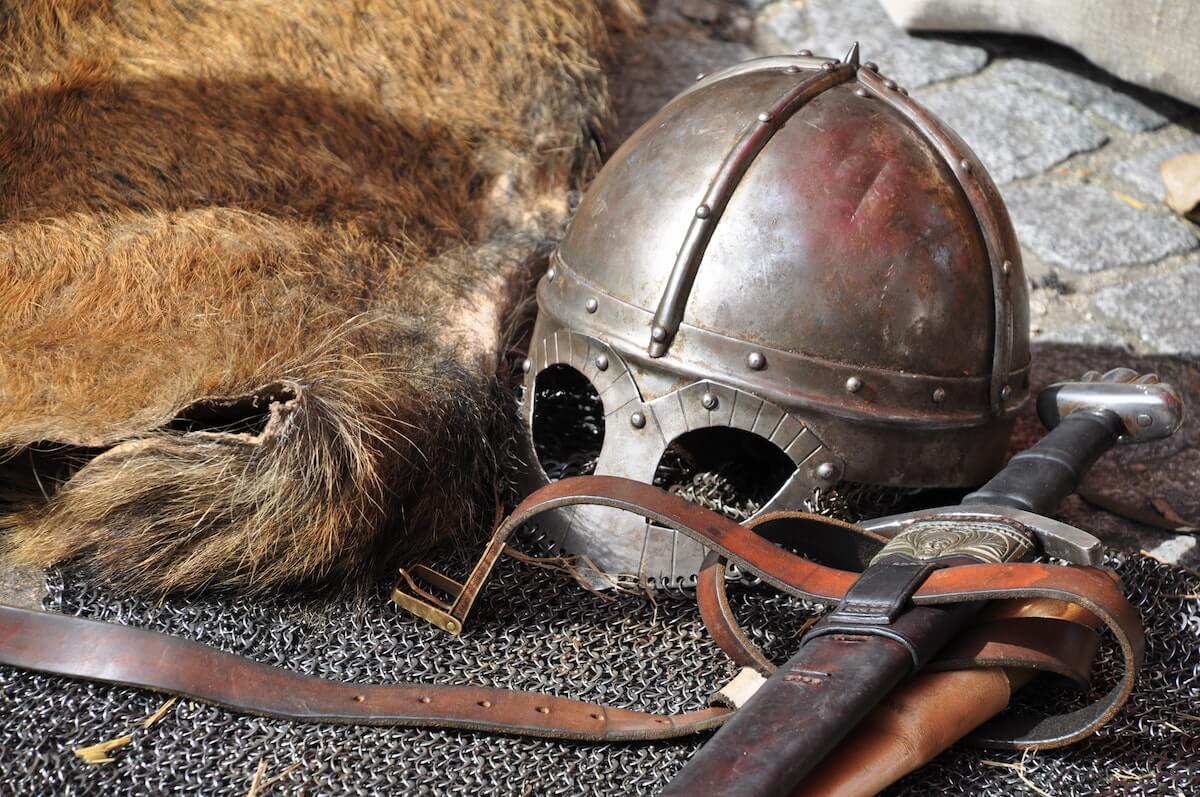The Killer (1989) is bursting with wild action sequences, living up to the promise of the film’s bananas movie poster. All those explosions, automatic weapons, and body count? Yeah, it’s got all that and a bag of slow-motion.
But you may not expect the side dish of filmatic poetry served alongside that beautifully choreographed carnage – a dark, dreamy pondering by men who puff on too many cigarettes and wonder about, perhaps, the meaning behind all those bullets they’ve sent rocketing away.
Strangely, the film did middling business in China. But it would go on to receive international acclaim, grabbing John Woo Hollywood’s attention.
And like completing a circle of movies, Woo started the project with (among other influences) Western filmmakers in heart. He intended the film as a tribute to directors Jean-Pierre Melville (Le Samourai) and Martin Scorsese (Mean Streets).
With its trademark gun-fu action sequences and continuation of Woo’s deep dive into male bonding, this entry in the so-called heroic bloodshed genre is considered by many to be Woo’s true masterpiece and most complete, free vision of the auteur’s expression.
And as Woo has been dubbed the so-called “Orson Welles of action,” his dancelike, “bullet ballet” style, imitated around the world from its emergence in the 1980s until now, this could be, in its own way, one of the most influential films….ever.
But I had never seen it!
So with a remake (directed by Woo himself) recently released on Peacock, I thought it an appropriate time to go back, right this cinematic wrong of mine, and explore the groundbreaking original.
So is The Killer 1989 a good movie?
The Plot of The Killer 1989:
When hitman Ah Jong (Chow Yun-fat) accidentally blinds Jennie (Sally Yeh), a nightclub singer, during one of his hits, he is overcome with guilt. To make amends, he befriends Jennie and decides to earn the money to pay for an operation to restore her sight.
Luckily for Ah Jong, his best friend and manager, Fung Sei (Chu Kong), has a big target and payoff lined up for him – perfect for his last hit before retiring.
Unbeknownst to Ah Jong, a highly-skilled, protocol-breaking detective, Li Ying (Danny Lee) is part of the police forces protecting his next target.
Can Ah Jong pull off the hit and escape his life of crime?
The Rest of the Main Cast includes:
- Kenneth Tsang as Sgt. Tsang Yeh
- Shing Fui-on as Wong Hoi
- Ricky Yi Fan-wai as Frank Chen
- Barry Wong as Chief Inspector Dou, Detective Li’s police superior.
You can watch a trailer for the film on IMDB here.
Note: For English audiences like myself, the names of the characters depend on the subtitled version you get. For example, Ah Jong is called “John” or “Jeff” in various movie releases (I was stuck with Jeff, and I’m bemused as to how that is the American equivalent to Ah Jong).
For the purposes of this review, I’ll use what I believe to be the original Chinese names.
The Action Movie of Dreams, +4 Points
While some have accused Woo of glorifying gangsters, there’s nothing but sentiment about a life of crime here.
In its quiet moments, subdued but not dour, the film has a contemplative style, like an elegant repose.
And the editing ups the romanticism. You’ll see lots of fades scene-to-scene. There are many freeze frames and tons of slow-motion – this time not just for those John Woo gunfights but also for the dramatics. We frequently flash back to events – even those that just happened – to hit the audience with that thought or reveal again.
Ah Jong expresses to his manager, Fung Sei, his fondness for sitting in the church – not for religion but to enjoy the tranquility.
Detective Li Ying sits in Ah Jong’s chair with a cigarette, perhaps imagining this killer he’s becoming fond of doing the same, with the film flashing back to Ah Jong’s choice moment in the recliner. It’s a nifty visual parallel, showing you the fascination with his foe growing in the detective.
And this is the movie that popularized those symbolic doves in John Woo’s work (though they first appeared in A Better Tomorrow).
Yes, these birds became a Woo trope that could sometimes drive you nuts (looking at you, Mission Impossible 2) and lead to parodies like in Scary Movie 2 (at 2:10).
But here, it’s actually eloquent as the creamy white flyers flop about the church setting, incidentally blowing out candles – like messengers of doom from beyond.
Got It, Good Pacing, +3 Points
You need not worry about being bored here. By just minute eleven, we’ve already done the ill-fated hit that blinds Jennie, seen her hospitalized, and she and Ah-Jong reunited.
And when we’ve gotten to that all-important 24/25th minute point, which is usually the inciting incident in most films, even Detective Li Ying has done a whole undercover operation and debrief.
That’s some serious speed without feeling rushed, and the rest of the film keeps the momentum.
Now That’s a Standoff, +2 Points
It’s as if this movie is an entry in a most standoffs competition.
Scroll through photos of this film on IMDB, and you’ll get picture after picture of men pointing guns in each other’s mugs – a visual Woo uses in many of his works.
But the crazy volume of these tense moments isn’t what I’m rewarding here.
I’m giving points for the strangely flirty scene where Ah Jong and Detective Li Ying face off in Ah Jong’s apartment. Each of them, gun drawn, has to keep their sidearm pointed at the other while Jenny, blind and oblivious, serves them tea.
Further complicating things for Ah Jong, Li Ying’s partner, Sgt. Tsang Yeh, is ready to bust in and rock out with his pistol out.
The men fake small talk, lying about the situation for Jennie. But when she’s out of the room, they slip in threats or jostle for the upper hand.
Their game of pointed handguns adds severe tension to dialogue-heavy scenes.
I Love the Way You Point that Gun At My Head, +3 Points
Woo helped establish the heroic bloodshed genre with A Better Tomorrow, and those male bonds are stretched and explored here.
Ah Jong and his best friend, retired hitman Fung Sei, are each other’s keepers. Fung Sei may be the only one who knows Ah Jong’s reality. In their isolated world of the hitperson, only they can comment on each other’s honor or lack thereof. As Fung Sei wonders what the meaning of his life has been, he asks Ah Jong if he’s been a man of honor or merely a dog.
And an admiration grows between Ah Jong and Detective Li Ying. Li Ying’s struggles with the police force are a dirty mirror for Ah Jong’s life in crime.
The two men, both struggling against the forces that try to control them, have their own sense of honor that they respect in one another. Li Ying admires Ah Jong’s freedom, and his determination to bring him to justice molds into a fascination and desire to help him escape.
Like I’ve said about other Woo films, I find the admiration and friendship among men a nifty alternative (and in some cases antidote) to the buddy cop formula (the deliberate pairing of opposites) that’s been, rightly and wrongly, infecting cop movies for decades.
And you’d never imagine the cynical John McClane (Die Hard) or brawny Harry Tasker (True Lies) bursting into tears like Ah Jong.
Crashing Gunfights, +8 Points
The movie’s exhilarating action sequences (a whopping 10-15 of them, depending on how you count them) will absolutely entertain you. Close-quarters shootouts with bullet dives and slides, attempted drive-bys, or all-out assaults – yes, yes, and yes.
Some consider this Woo’s finest action (which is saying something) and among the best chaos put to film in general. Armed with 90 days of shooting time, Woo was careful, as he always is, to put the fine touches on those intricate details – like flying drops of concrete from errant blasts – that make it.
But it’s not all joy. At times, it’s almost comical in its excesses.
Like video game mayhem, the villains spawn anywhere. There are enemies on the top of a roof you’d need an extending ladder to get up to, and you tactically wonder what the point of the climb was.
The assassins after Ah Jong tuck and roll sometimes, which seems more for show and not for any strategic reason, and they only approach in a couple of groups at a time because of course they do.
Also – and I hate to be harsh – I swear to have spotted a few moments of characters not even looking where they were firing (and not in that no-look pass, I meant that gunshot kind of way).
But these complaints go against the grain of John Woo violence. Your task is to forget about reloading, physics, or odds.
Once you move with the mayhem as the mythopoetic exploits of master marksmen, it’s great.
What’s Not Working So Well Here:
Love is Blind, -2 Points
It’s a tough ask to find a fault in The Killer, but I’ll give it one nitpick here.
The love story between Ah Jong and Jennie gives the film a dark romantic weight, but I wished for more character depth in Jennie.
Other than being a lounge singer losing what’s left of her sight, we don’t know about her life. What draws her to Ah Jong, other than his company? She’s a victim, but as a love interest, hollow.
To be fair to Woo, with a runtime of 110 minutes, tucking more scenes exploring Jennie makes for a challenge. And as Jennie is the object of Ah Jong’s guilt, she does function as is.
Still, there is the opportunity to take this deeper, which would give the relationship and the urgency to save her even more punch.
Go Watch The Killer 1989:
Total Arbitrary Points Score: 18 Points
The Killer 1989 is John Woo going elegiac.
Mixed with that groundbreaking, so-called “balletic” violence, Woo taps hard into dark fatalism.
Filled with fantastic imagery, be it another slow-motion flashback of emotion or unhinged violence, the film’s visual style will sweep you away.
But it’s not all fiery muzzle flashes. There’s collateral damage for men who find common ground as honorable, if not always moral, people struggling against the forces that oppress them.
The movie gives you much to ponder while blowing you (and a whole lot of people) away.
As entertaining as it is important to film history, if you’ve never seen The Killer 1989, plug it into your watchlist.
Enjoyed this Post?
Thank you so much. If you’d like to get a ping when I have a new article, you can join my newsletter below.
Disclaimer:
This review’s factual information was gathered through online sources, like Wikipedia, IMDB, or interviews. Misrepresentations and errors are possible but unintentional.
Making art is hard. This is a fan’s blog. Any criticisms are meant to be constructive.




